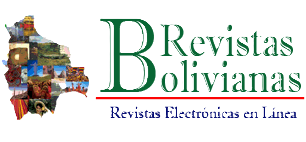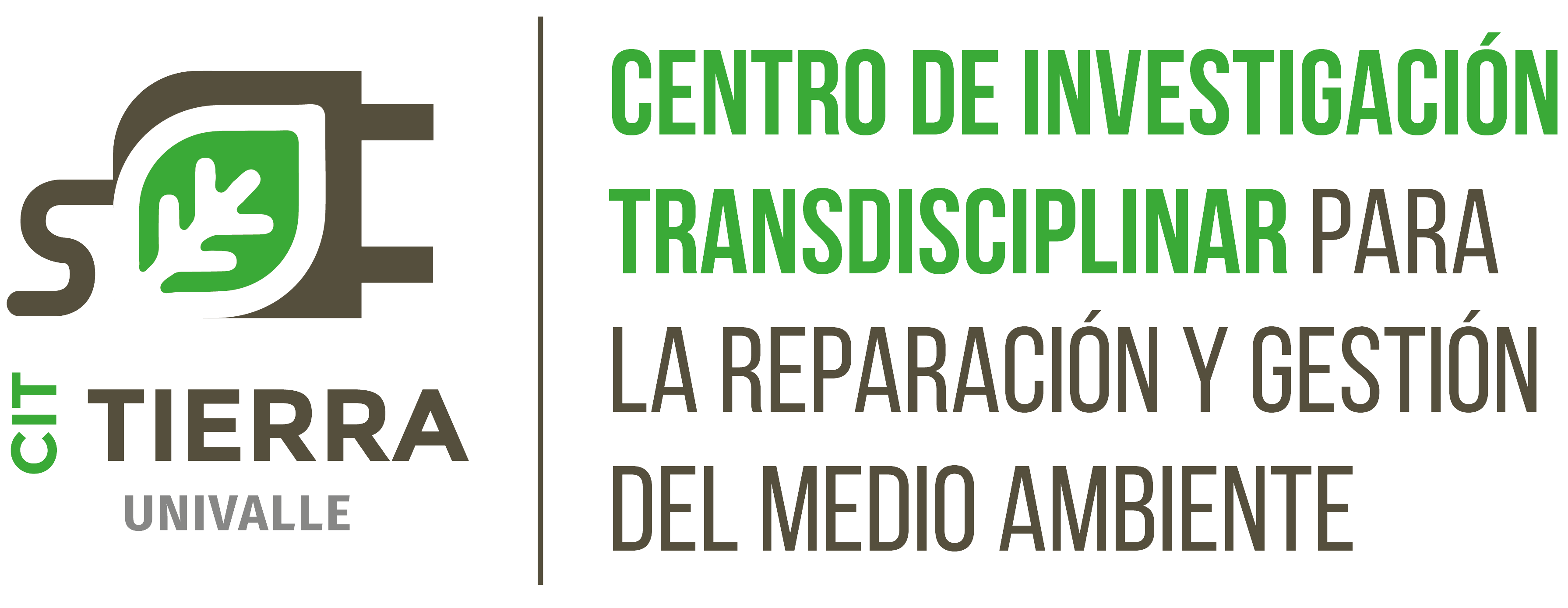Modelling of the Bolivian energy sector to achieve carbon neutrality by 2050, in the framework of energy transition in Bolivian
Modelización del sector energético boliviano para alcanzar la neutralidad de carbono en 2050, en el marco de la Transición Energética en Bolivia
DOI:
https://doi.org/10.52428/20758944.v19iEspecial.450Keywords:
Sistemas energéticos, Modelización energética, Bolivia, Transición energética, Emisiones del GEI, Política energética, Carbono neutralidadAbstract
The 2018 IPCC special report on global warming indicates that by 2050 all CO2 emissions on the planet must be neutralized, not to not exceed the 1.5°C global warming. In this context, Bolivia is making efforts in its electric sector, such as increasing the share of renewable energy and decommissioning inefficient power plants. However, these efforts remain limited when compared to the total national energy demand. Currently, more than 80% of internal energy consumption in Bolivia is of fossil origin.
Under these conditions and in the face of the global climate emergency, how should Bolivia respond to the challenge of decarbonizing its energy sector?
To better answer this question, a long-term optimization model of the Bolivian energy sector was developed with OSeMOSYS, considering the national energy demands, disaggregated by fuel and type of consumer. The model has a bottom-up approach focusing on techno-economic variables and aims to determine the most cost-efficient solution to cover the projected energy demands until 2050.
Results show that, in a Business as Usual scenario (BAU), by 2040, CO2e emissions from the energy sector will practically double compared to 2020 and 96% of energy sources will be fossil fuels. To analyse potential deviations from this trend, four policy-based scenarios are modelled: 1) electrification of energy demands (EED); 2) introduction of carbon taxation (CTI); 3) gradual reduction of fossil fuel subsidies (NSR); 4) implementation energy efficiency measures (EEM).
While each of these scenarios have limited effects over the energy system, a synergistic effect is achieved when a simultaneous implementation of their measures is analysed (MP). In this scenario the participation of the electricity in the Bolivian energy consumption reaches 87% by 2050, of which over 96% is produced by renewable sources, and emissions are reduced by 74% in 2050 compared to the BAU scenario. However, while this scenario starts a transition process in the energy sector, it would still not become emission-free by 2050.
Achieving carbon neutrality in the energy sector by 2050 (CN) would require a large investment just to cover capital costs of new powerplants, close to a yearly investment between 2020 and 2050 of 10% of the current national GDP of Bolivia. Given that this value would represent 22 times the investments required in a BAU scenario, complementary measures with other sectors or technologies need to be explored to find more feasible and cost-effective solutions.
Downloads
References
J. Houghton, "Global warming," Reports on Progress in Physics, p. 1343-1403, 2005.
https://doi.org/10.1088/0034-4885/68/6/R02 DOI: https://doi.org/10.1088/0034-4885/68/6/R02
IPCC, "Climate Change 2007: Synthesis report," Fourth Assessment Report of the Intergovernmental Panel on Climate Change, Cambridge, 2007.
https://doi.org/10.1017/CBO9780511546013 DOI: https://doi.org/10.1017/CBO9780511546013
IPCC, "Calentamiento global de 1.5°C", IPCC, Suiza, 2018.
J. Chen, "Carbono neutrality: Towards a sustainable future", The Innovation, 2021.
https://doi.org/10.1016/j.xinn.2021.100127 DOI: https://doi.org/10.1016/j.xinn.2021.100127
F. Wang, J. Harindintwali, Z. Yuan, M. Wang, F. Wang y S. Li, "Technologies and perspectives for achieving carbon neutrality", The Innovation, vol. 2, p. 100180, 2021.
https://doi.org/10.1016/j.xinn.2021.100180 DOI: https://doi.org/10.1016/j.xinn.2021.100180
Instituto de Recursos Mundiales, "Emisiones históricas de GEI", 2021. [En línea]. Disponible: https://www.climatewatchdata.org/ghg-emissions.
G. Resch, A. Held, T. Faber, C. Panzer, F. Toro y R. Haas, "Potentials and prospects for renewable energies at global scale," Energy Policy, pp. 4048-4056, 2008.
https://doi.org/10.1016/j.enpol.2008.06.029 DOI: https://doi.org/10.1016/j.enpol.2008.06.029
M. Venegas, "Of renewable energy, energydemocracy, and sustainable development: A roadmap to accelerate the energy transition in developing countries", Energy Research & Social Science, p. 101716, 2020.
https://doi.org/10.1016/j.erss.2020.101716 DOI: https://doi.org/10.1016/j.erss.2020.101716
R. Rojas, A. Araoz, S. Balderrama, J. Peña, V. Senosiain y S. Quolin, "Techno-economic assessment of high renewable energy source penetration in the Bolivian interconnected electric system", Actas de la 31ª Conferencia ECOS, 2018.
T. Stringer y M. Joanis, "Evaluación de los costos de transición energética: desafíos subnacionales en Canadá", Política energética, 2022.
A. Carvalho, M. Rquito y V. Ferreira, «Sociotechnical imaginaries of energy transition: The case of the Portuguese Roadmap for Carbon Neutrality 2050», Energy Reports, vol. 8, pp. 2413-2423, 2022.
https://doi.org/10.1016/j.egyr.2022.01.138 DOI: https://doi.org/10.1016/j.egyr.2022.01.138
T. Schmidt y S. Sewerin, "Technology as a driver of climate and energy politics", Nat Energy, 2017.
https://doi.org/10.1038/nenergy.2017.84 DOI: https://doi.org/10.1038/nenergy.2017.84
A. Sadiqa, A. Gulagi y C. Breyer, "Energy transition roadmap towards 100% renewable energy and role of storage technologies for Pakistan by 2050", Energy, pp. 518-533, 2018.
https://doi.org/10.1016/j.energy.2018.01.027 DOI: https://doi.org/10.1016/j.energy.2018.01.027
J. Peña, O. Broad, C. Sevillano, L. Alejo y M. Howells, "Techno-economic demand projections and scenarios for the Bolivian energy system", Energy Strategy Reviews, vol. 16, pp. 96-109, 2017.
https://doi.org/10.1016/j.esr.2017.03.001 DOI: https://doi.org/10.1016/j.esr.2017.03.001
G. Pinto de Moura, L. Loureiro, G. Peña y M. Howells, "South America power integration, Bolivian electricity export potential and bargaining power: An OSeMOSYS SAMBA approach", Energy Strategy Reviews, vol. 17, pp. 27-36, 2017.
https://doi.org/10.1016/j.esr.2017.06.002 DOI: https://doi.org/10.1016/j.esr.2017.06.002
WWF & ENERGETICA, "Modelamiento del sistema energetico Boliviano al 2040 segun metas del IPCC," Cochabamba, 2020.
C. Fernández, R. Brecha y M. Fernández, "Análisis de las políticas de emisiones de carbono para el sector eléctrico boliviano", Transición energética renovable y sostenible, vol. 2, 2022.
Ministerio de Hidrocarburos y Energia, "Balance Energetico Nacional 2006-2020," La Paz, 2022.
Ministerio de Medio Ambiente y Agua, "Inventario de emisiones de Bolivia: 2002 y 2004," La Paz, 2004.
Ministerio de Medio Ambiente y Agua, "Tercera Comunicacion Nacional del Estado Plurinacional de Bolivia," La Paz, 2020.
M. Chávez Rodríguez y et. al., "¿Puede Bolivia mantener su papel como un importante exportador de gas natural en América del Sur?", Journal of Natural Gas Science and Engineering, pp. 717-730, 2016.
https://doi.org/10.1016/j.jngse.2016.06.008 DOI: https://doi.org/10.1016/j.jngse.2016.06.008
AETN, "Anuario Estadistico 2020," La Paz, 2021.
AETN, "Memoria Anual 2020," La Paz, 2021.
Ministerio de Hidrocarburos y Energia, "Plan Optimo de Expansion del Sistema Interconectado Nacional," La Paz, 2012.
Ministerio de Hidrocarburos y Energia, "Plan Eléctrico del Estado Plurinacional de Bolivia 2025," Viceministerio de Electricidad y Energías Alternativas, La Paz, 2014.
Bolivia, "Contribución Prevista Determinada Nacionalmente del Estado Plurinacional de Bolivia," 2016. [Online]. Available: https://www4.unfccc.int/sites/ndcstaging/PublishedDocuments/Bolivia%20(Plurinational%20State%20of)%20First/ESTADO%20PLURINACIONAL%20DE%20BOLIVIA1.pdf.
CMNUCC, "Registro NDC", 2016. [En línea]. Disponible: https://www4.unfccc.int/sites/NDCStaging/pages/Party.aspx?party=BOL.
Ministerio de Planificacion y Desarrollo, "Plan de Desarrollo Economico y Social 2021-2025," La Paz, 2021.
M. Howells, H. Rogner, N. Strachan, C. Heaps, H. Huntington, S. Kypreos, A. Hughes, S. Silveira, J. DeCarolis, M. Bazilian y A. Roehrl, "OSeMOSYS: The Open Source Energy Modeling System: An introduction to its ethos, structure and development," Energy Policy, vol. 39, pp. 5850-5870, 2011.
https://doi.org/10.1016/j.enpol.2011.06.033 DOI: https://doi.org/10.1016/j.enpol.2011.06.033
F. Gardumi, A. Shivakumar, R. Morrison, C. Taliotis, O. Broad, A. Beltramo y M. Howells, "From the development of an open-source energy modelling tool to its application and the creation of communities of practice: The example of OSeMOSYS", Energy Strategy Reviews, vol. 20, pp. 209-228, 2018.
https://doi.org/10.1016/j.esr.2018.03.005 DOI: https://doi.org/10.1016/j.esr.2018.03.005
CNDC, "Memoria Anual 2020," Cochabamba, 2021.
ENDE, "Proyectos ejecutados," 10 January 2022. [Online]. Available: https://www.ende.bo/proyectos/ejecutados.
ENDE, "Proyectos en ejecucion," 10 January 2022. [Online]. Available: https://www.ende.bo/proyectos/ejecucion.
ENDE, "Proyectos en estudio," 10 January 2022. [Online]. Available: https://www.ende.bo/proyectos/estudio.
L. P. Rosa y R. Schaeffer, "Greenhouse gas emissions from hydroelectric reservoirs," Ambio, vol. 23, pp. 164-165, 1994.
IPCC, "2006 IPCC guide lines for National Greenhouse Gas Inventories", Institute for Global Environmental Strategies (IGES), 2006.
L. Gagnon y J. van der Vate, "Greenhouse gas emissions from hydropower: The state of research in 1996," Energy Policy, vol. 25, pp. 7-13, 1997.
https://doi.org/10.1016/S0301-4215(96)00125-5 DOI: https://doi.org/10.1016/S0301-4215(96)00125-5
R. Almeida y et. al., "Reducción de las emisiones de gases de efecto invernadero de la energía hidroeléctrica amazónica con planificación estratégica de represas", NATURE COMMUNICATIONS, 2019.
J. Rudd, R. Hecky y R. Harris, "Are hydroelectric reservoirs significant sources of greenhouse gases?", Ambio, vol. 22, pp. 246-248, 1993.
W. Steinhurst, P. Knight y M. Schultz, "Hydropower Greenhouse Gas Emissions", Synapse, Cambridge, 2012.
Ministerio de Hidrocarburos y Energia, "Balance Energetico Nacional 2000-2014," La Paz, 2015.
Organización Latinoamericana de Energía, "Sistema de Información Energética de Latinoamérica y el Caribe," 2019. [Online]. Available: http://sielac.olade.org/default.aspx. [Accessed 01 Agosto 2019].
Organización Latinoamericana de Energía, "Prospectiva energética de América Latina y el Caribe," in Panorama energético de América Latina y el Caribe 2019, Quito, OLADE, 2019.
R. Landaveri, Modelización y Prospectiva del Sistema Energético Boliviano 2007 - 2025. Escenarios tendencial y de mitigación, Fundación Bariloche, 2009.
N. Jara and C. Isaza, "Programas de Eficiencia Energética y Etiquetado en el Ecuador - Revisión del Estado Actual," in II ENCUENTRO DE TECNOLOGÍA E INGENIERIA & X SIMPOSIO INTERNACIONAL EN ENERGIAS , Medellin, 2014.
R. Plaza, E. Escobar and D. Aguirre, "ANÁLISIS DE EFICIENCIA ENERGÉTICA EN LA IMPLEMENTACIÓN DE COCINAS DE INDUCCIÓN EN EL SISTEMA ELÉCTRICO ECUATORIANO," ESCUELA SUPERIOR POLITECNICA DEL LITORAL, Guayaquil, 2015.
UNECE, "BEST POLICY PRACTICES FOR PROMOTING ENERGY EFFICIENCY", Naciones Unidas, Ginebra, 2015.
APEC, "COMPENDIO DE POLÍTICAS DE EFICIENCIA ENERGÉTICA DE LAS ECONOMÍAS DE APEC", CENTRO DE INVESTIGACIÓN ENERGÉTICA DE ASIA PACÍFICO, Tokio, 2016.
AIE, "Nordic EV Outlook 2018: Insights from leaders in electric mobility", OCDE / AIE, 2018.
Ecofys, "Incentivos para vehículos eléctricos en Noruega", UKI, 2018.
P. Haugneland, E. Lorentzen, C. Bu y E. Hauge, "Put a price on carbon to fund EV incentives - Norwegian EV policy success", EVS30 Symposium, 2017.
S. Marañon, "Análisis de escenarios potenciales de desarrollo para el parque automotor de Bolivia y sus emisiones de gases efecto invernadero en el software LEAP para el periodo 2020-2030," Cochabamba, 2022.
W. Sweeting, A. Hutchinson y S. Savage, "Factores que afectan el consumo de energía de vehículos eléctricos", International Journal of Sustainable Engineering, 2011.
F. Bühler, F. Müller y B. Elmegaard, "Potencialidades para la electrificación de los procesos industriales en Dinamarca", ECOS 2019, 2019.
S. Malla y G. Timilsina, "Household Cooking Fuel Choice and Adoption of Improved Cookstoves in Developing Countries", Policy Research Working Paper Series, 2014.
https://doi.org/10.1596/1813-9450-6903 DOI: https://doi.org/10.1596/1813-9450-6903
J. Brenn y C. Bach, "Comparison of natural gas driven heat pumps and electrically driven heat pumps with conventional systems for building heating purposes," Energy and Buildings, pp. 904-908, 2010.
https://doi.org/10.1016/j.enbuild.2009.12.012 DOI: https://doi.org/10.1016/j.enbuild.2009.12.012
J. Valero, "El camión eléctrico comienza a hacer su aparición en el mercado," 11 Mayo 2016. [Online]. Available: https://hipertextual.com/2016/05/camion-electrico-mercado.
Ministerio de Energias, "Ley de Electricidad N 1604," 21 Diciembre 1994. [Online]. Available: https://www.cndc.bo/normativa/ley_electricidad.php.
Index Mundi, "Gas natural Precio Mensual - Dólares americanos por millón de BTU," 16 Diciembre 2019. [Online]. Available: https://www.indexmundi.com/es/precios-de-mercado/?mercancia=gas-natural&meses=120.
L. Manzaneda, "Bolivia pierde casi $us 500 millones anuales por los precios bajos de gas y electricidad," Los Tiempos, 9 Septiembre 2018.
AIE, "World Energy Outlook 2021", París, 2021.
AIE, "World Energy Outlook", Agencia Internacional de Energía, 2017.
J. Sumner, L. Bird y H. Smith, "Carbon Taxes: A Review of Experience and Policy Design Considerations," National Renewable Energy Laboratory, Colorado, 2009.
https://doi.org/10.2172/970341 DOI: https://doi.org/10.2172/970341
Banco Mundial, "CARBON TAX GUIDE - A Handbook for Policy Makers", Banco Internacional de Reconstrucción y Fomento / Banco Mundial, Washington DC, 2017.
J. Horowitz y et. al., "Metodología para analizar un impuesto al carbono", Oficina de Análisis Fiscal, 2017.
Statista, "Precios de los impuestos al carbono implementados en todo el mundo 2021, por país seleccionado", 1 de diciembre de 2021. [En línea]. Disponible: https://www.statista.com/statistics/483590/prices-of-implemented-carbon-pricing-instruments-worldwide-by-select-country/#:~:text=As%20of%20April%202021%2C%20Sweden,carbon%20tax%20back%20in%201990.
E. Asen, «Looking Back on 30 Years of Carbon Taxes in Sweden», 23 de septiembre de 2020. [En línea]. Disponible: https://taxfoundation.org/sweden-carbon-tax-revenue-greenhouse-gas-emissions/.
CTC, "Where Carbon Is Taxed", 12 de marzo de 2018. [En línea]. Disponible: https://www.carbontax.org/where-carbon-is-taxed/.
Banco Mundial, "Poner un precio al carbono con un impuesto", 12 de marzo de 2018. [En línea]. Disponible: https://www.worldbank.org/content/dam/Worldbank/document/SDN/background-note_carbon-tax.pdf.
IPCC, "Calentamiento global de 1.5°C. Resumen para responsables políticos", IPCC, Suiza, 2018.
Banco Mundial, "GDP (Current US$) - Bolivia," [en línea]. Disponible: https://data.worldbank.org/indicator/NY.GDP.MKTP.CD?locations=BO. [Consultado el 5 de febrero de 2022].
P. Cachaga, J. Romero and J. Acho, "Evaluación de la inversión pública en Bolivia: Un análisis mediante fronteras de eficiencia," Revista de Análisis, vol. 32, pp. 169-200, 2020.
Jacobson y et. al., "100% Clean and Renewable Wind, Water, and Sunlight All-Sector Energy Roadmaps for 139 Countries of the World", Joule, vol. 1, pp. 108-121, 2017.
https://doi.org/10.1016/j.joule.2017.07.005 DOI: https://doi.org/10.1016/j.joule.2017.07.005
M. Navia, R. Orellana, S. Zárate, M. Villazon, S. Balderrama y S. Quoilin, "Energy Transition Planning with High Penetration of Variable Renewable Energy in Developing Countries: The Case of the Bolivian Interconnected Power System", Energies, vol. 15, 2022.
https://doi.org/10.3390/en15030968 DOI: https://doi.org/10.3390/en15030968
J. Hamilton, Time Series Analysis, Princeton University Press, 1994.
https://doi.org/10.1515/9780691218632 DOI: https://doi.org/10.1515/9780691218632
D. Gujarati y D. Porter, Econometría, México D. F.: McGraw-Hill , 2010.
E. Foster, M. Contestabile, J. Blazquez, B. Manzano, M. Workman y N. Shah, "The unstudy barriers to widespread renewable energy deployment: Fossil fuel price responses", Energy Policy, vol. 103, pp. 258-264, 2017.
https://doi.org/10.1016/j.enpol.2016.12.050 DOI: https://doi.org/10.1016/j.enpol.2016.12.050
G. López, A. Aghahosseini y D. Bogdanov, "Pathway to a fully sustainable energy system for Bolivia across power, heat, and transport sectors by 2050", Journal of Cleaner Production, 2021.
https://doi.org/10.1016/j.jclepro.2021.126195 DOI: https://doi.org/10.1016/j.jclepro.2021.126195
F. Kern y A. Smith, "Restructuring energy systems for sustainability? Política de transición energética en los Países Bajos", Energy Policy, pp. 4093-4103, 2008.
https://doi.org/10.1016/j.enpol.2008.06.018 DOI: https://doi.org/10.1016/j.enpol.2008.06.018
J. Dixon, K. Bell y S. Brush, "Which way to net zero? un análisis comparativo de siete vías de descarbonización del Reino Unido 2050", Transición de energía renovable y sostenible, vol. 2, 2021.
K. Gillingham, A. Keyes y K. Palmer, "Avances en la evaluación de políticas y programas de eficiencia energética", Recursos para el futuro, Washington, 2017.
BYD, 16 de diciembre de 2019. [En línea]. Disponible: https://en.byd.com/.
ICCT, "Vehículos eléctricos", 16 de diciembre de 2019. [En línea]. Disponible: sites/default/files/BYD%20EV%20SEDEMA.pdf.
ATUC, "Asociacion de Transportes publicos urbanos y metropolitanos," 16 Diciembre 2019. [Online]. Available: https://www.atuc.es/pdf/253.pdf.
D. Connolly, H. Hund y B. Mathiesen, «Smart Energy Europe: The technical and economic impact of one potential 100% renewable energy scenario for the European Union», Renewable and Sustainable Energy Reviews, 2016.
https://doi.org/10.1016/j.rser.2016.02.025 DOI: https://doi.org/10.1016/j.rser.2016.02.025
K. Kavvadias, I. Hidalgo, A. Zucker y S. Quolin, «Integrated modelling of future EU power and heat systems: The Dispa-SET v2.2 open-source model», informe técnico del JRC, 2018.
H. Lütkepohl, New Introduction to Multiple Time Series Analysis, Berlín: Springer, 2005.
https://doi.org/10.1007/978-3-540-27752-1 DOI: https://doi.org/10.1007/978-3-540-27752-1
Published
How to Cite
Issue
Section
License
Copyright (c) 2023 Miguel Fernádez Fuentes

This work is licensed under a Creative Commons Attribution 4.0 International License.
Authors who publish with this journal agree to the following terms:
- Authors retain copyright and grant the journal right of first publication with the work simultaneously licensed under a Creative Commons Attribution License 4.0 that allows others to share the work with an acknowledgement of the work's authorship and initial publication in this journal.
- Authors are able to enter into separate, additional contractual arrangements for the non-exclusive distribution of the journal's published version of the work (e.g., post it to an institutional repository or publish it in a book), with an acknowledgement of its initial publication in this journal.
- Authors are permitted and encouraged to post their work online (e.g., in institutional repositories or on their website) prior to and during the submission process, as it can lead to productive exchanges, as well as earlier and greater citation of published work.
Funding data
-
VLIRUOS
Grant numbers BO2020SIN270 Sur















